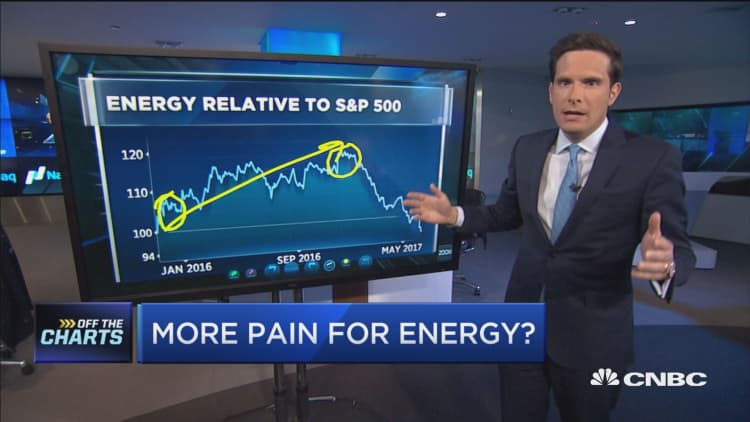Oil prices eked out gains on Thursday after a larger-than-expected draw in U.S. inventories, providing some relief amid investor skepticism that OPEC-led cuts will be enough to rebalance an oversupplied market.
U.S. crude stocks fell sharply last week, driven by a surge in refining and exports to record highs, while gasoline inventories also dropped sharply ahead of the start of the summer driving season, the Energy Information Administration said.
"It's what the market needs to get a little more excited about prices," said Scott Shelton, energy specialist at ICAP in Durham, North Carolina.
Oil futures initially extended gains after the data, but the rally eventually lost steam.
U.S. West Texas Intermediate crude futures ended Thursday's session 4 cents higher at $48.36 a barrel. Brent crude futures for August were down 31 cents at $50.45 a barrel by 2:34 p.m. ET (1834 GMT).

The EIA data showed that crude inventories dropped 6.4 million barrels, more than the 4.4 million-barrel drop forecast although a smaller drawdown that industry group the American Petroleum Institute's (API) report of a fall of 8.7 million barrels.
On Wednesday, a Reuters survey found output from the Organization of the Petroleum Exporting Countries (OPEC) rose in May, the first monthly increase this year, as higher supply from two states exempt from a production-cutting deal, Nigeria and Libya, offset improved compliance with the accord by others.
OPEC and other producers, including Russia, have agreed to restrict output by 1.8 million bpd to drain stockpiles that are close to record highs in many parts of the world.
The group, however, last week discussed cutting output by a further 1-1.5 percent, and could revisit the proposal should inventories remain high and continue to weigh on prices, sources said.
"There are signs that the 1.8 million barrel cut is not really what the market is feeling because of rising production in the U.S., Libya, Nigeria and even the North Sea," said Gene McGillian, manager of market research at Tradition Energy in Stamford, Connecticut.
Russia, which has cut production by 300,000 bpd under the deal, could increase production next year to as much as 11.07 million bpd, the country's deputy energy minister told Reuters.

U.S. production, meanwhile, is rising close to levels from top producers Russia and Saudi. It hit 9.34 million bpd last week, its highest since August 2015, according to the EIA.
"The worry is that you have rising output in the U.S. and that's going to offset cuts," said Gene McGillian, manager of market research at Tradition Energy in Stamford, Connecticut.
President Donald Trump has vowed to provide extra support for U.S. oil production and is expected to pull the United States out of a landmark global climate accord. He is expected to announce his decision at 3 p.m. EDT.
Phillip Futures' investment analyst Jonathan Chanes said a U.S. withdrawal would signal Trump's intention to further roll back emission regulations.
"That would favor the use and demand of fossil fuels," Chanes said.

